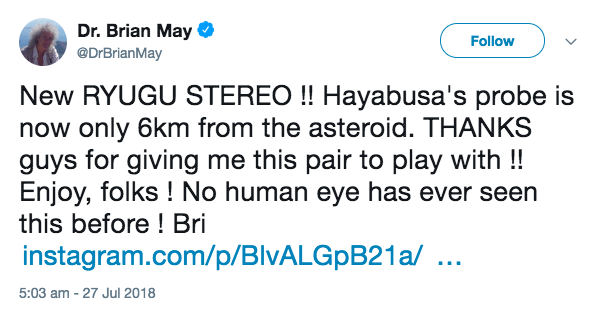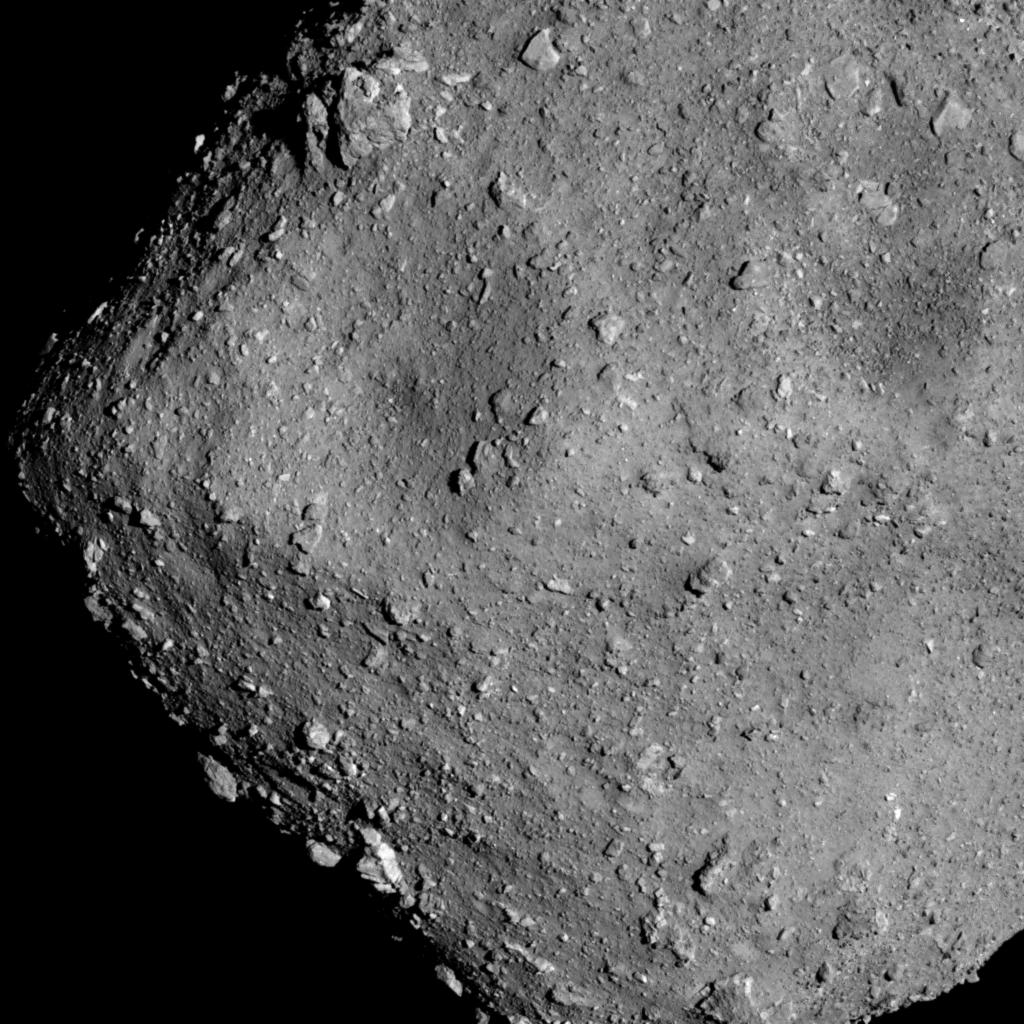The article posted on July 25, 2018 introduced an image captured when Hayabusa2 descended towards asteroid Ryugu, reaching an altitude of just 6km above the surface. At this time, we also took photographs in which the viewing angle towards the asteroid gradually changed as Ryugu rotated. Using the previously published image and a second image from a slightly different angle (see the referlence at the end of this page), we created a composite frame where the two photographs are superimposed in red and blue (Figure 1). If you view this image with red-blue stereoscopic glasses (right eye should be blue, left eye is red), you can see this high resolution image of the asteroid in three-dimensions and explore the shape and topography of this small world.
-

[Original size]
Figure 1: A red and blue stereoscopic image of Ryugu, prepared from the images taken by the Optical Navigation Camera - Telescopic (ONC-T) at an altitude of 6km. The images were taken on July 20, 2018.
Image credit ※:JAXA, University of Aizu, University of Tokyo, Kochi University, Rikkyo University, Nagoya University, Chiba Institute of Technology, Meiji University and AIST.
Comparing this new image with the stereoscopic image we previously introduced (part 1, part 2), the three-dimensional view is much more powerful with the irregularities on the surface significantly more emphasized. This is due to the high resolution of the composite photographs which were taken closer to the asteroid, and because the difference in the angle at which each image sees the asteroid is larger than that difference would be between the view from your left and right eye. While it depends on exactly how each person sees the stereo image, do be careful that the features may be exaggerated compared to the actual shape of Ryugu and the contours of the terrain.
Different types of topography can be spotted, such as the overhang along the equator of Ryugu in the center of the image and the unevenness created by the variety of large and small boulders as well as the circular dents of craters.
From the images in Figure 1, Dr. Brian May made a second binocular stereo image of Ryugu (the first binocular stereo image is here). Dr. May tweeted regarding the new image (Figure 2), which we show in Figure 3.-
 Figure 2: Tweet from Brian May
Figure 2: Tweet from Brian May
-
 [Enlargement]
[Enlargement]
Figure 3: Binocular stereo image by Brian May, from Instagram.
Image credit: Brian May.
The Hayabusa2 Project team once again thanks Dr. Brian May for the creation of this binocular stereo image! We hope everyone will enjoy both the red/blue and binocular stereo images and explore Ryugu's landscape with us.
Reference:
Below is the source of the second image in the stereo pair. The first image can be found in the article from July 25.
-

[Original size]
Figure 4: Asteroid Ryugu from an altitude of 6km. Image was captured with the Optical Navigation Camera - Telescopic (ONC-T) on July 20, 2018 at around 16:00 JST, after 10 min from the another image.
Image credit ※: JAXA, University of Tokyo, Kochi University, Rikkyo University, Nagoya University, Chiba Institute of Technology, Meiji University, University of Aizu, AIST.
※ Please use the displayed credit when reproducing these images. In the case where an abbreviated form is necessary, please write "JAXA, University of Aizu & collaborators".
Hayabusa2 Project
2018.07.31

